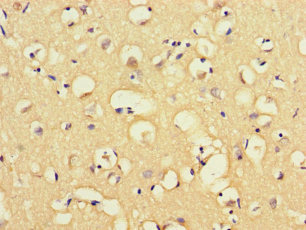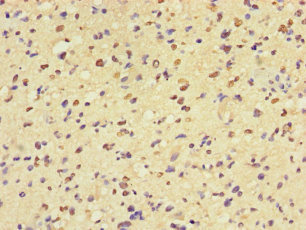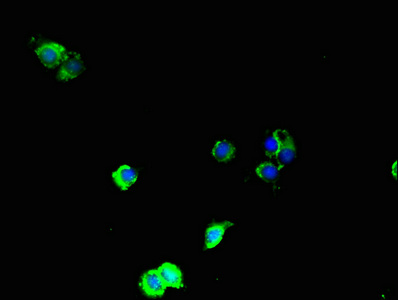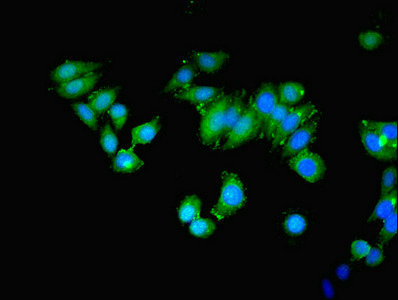
Immunohistochemistry of paraffin-embedded human brain tissue using CSB-PA013433LA01HU at dilution of 1:100
MAP3K8 Antibody

CSB-PA013433LA01HU
ApplicationsImmunoFluorescence, ELISA, ImmunoHistoChemistry
Product group Antibodies
ReactivityHuman
TargetMAP3K8
Overview
- SupplierCusabio
- Product NameMAP3K8 Antibody
- Delivery Days Customer20
- ApplicationsImmunoFluorescence, ELISA, ImmunoHistoChemistry
- CertificationResearch Use Only
- ClonalityPolyclonal
- ConjugateUnconjugated
- FormulationLiquid
- Gene ID1326
- Target nameMAP3K8
- Target descriptionmitogen-activated protein kinase kinase kinase 8
- Target synonymsaugmented in rheumatoid arthritis 2; AURA2; c-COT; COT; cot (cancer Osaka thyroid) oncogene; EST; ESTF; Ewing sarcoma transformant; MEKK8; mitogen-activated protein kinase kinase kinase 8; proto-oncogene c-Cot; proto-oncogene serine/threoine protein kinase; TPL2; Tpl-2; tumor progression locus 2
- HostRabbit
- IsotypeIgG
- Protein IDP41279
- Protein NameMitogen-activated protein kinase kinase kinase 8
- Scientific DescriptionRequired for lipopolysaccharide (LPS)-induced, TLR4-mediated activation of the MAPK/ERK pathway in macrophages, thus being critical for production of the proinflammatory cytokine TNF-alpha (TNF) during immune responses. Involved in the regulation of T-helper cell differentiation and IFNG expression in T-cells. Involved in mediating host resistance to bacterial infection through negative regulation of type I interferon (IFN) production. In vitro, activates MAPK/ERK pathway in response to IL1 in an IRAK1-independent manner, leading to up-regulation of IL8 and CCL4. Transduces CD40 and TNFRSF1A signals that activate ERK in B-cells and macrophages, and thus may play a role in the regulation of immunoglobulin production. May also play a role in the transduction of TNF signals that activate JNK and NF-kappa-B in some cell types. In adipocytes, activates MAPK/ERK pathway in an IKBKB-dependent manner in response to IL1B and TNF, but not insulin, leading to induction of lipolysis. Plays a role in the cell cycle. Isoform 1 shows some transforming activity, although it is much weaker than that of the activated oncogenic variant.
- ReactivityHuman
- Storage Instruction-20°C or -80°C
- UNSPSC12352203



